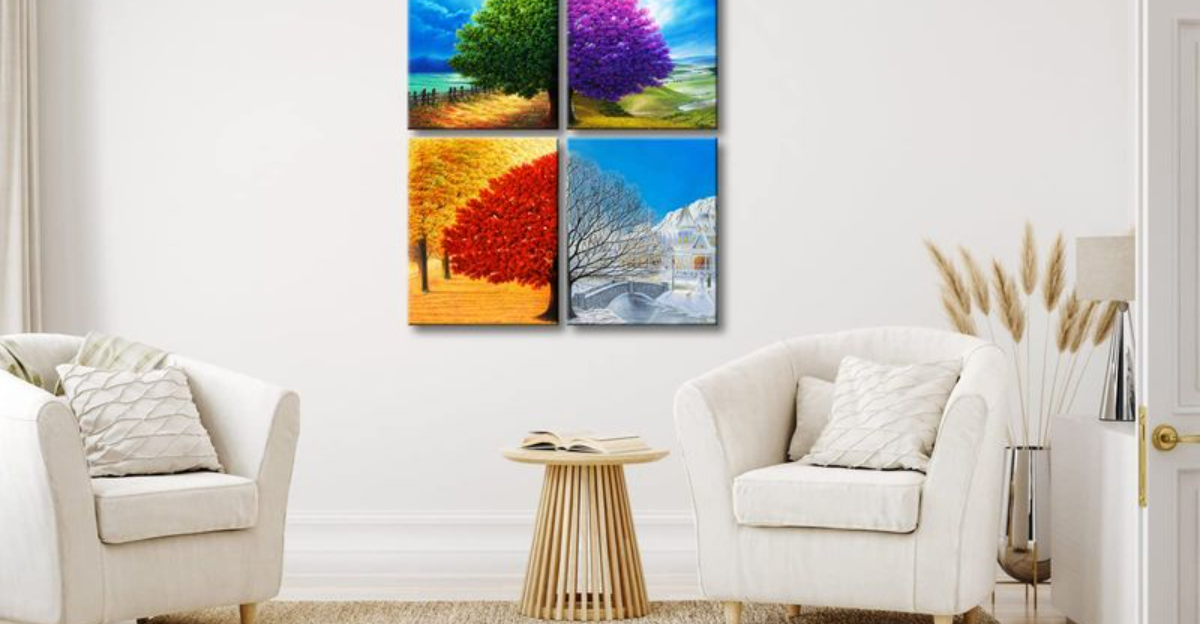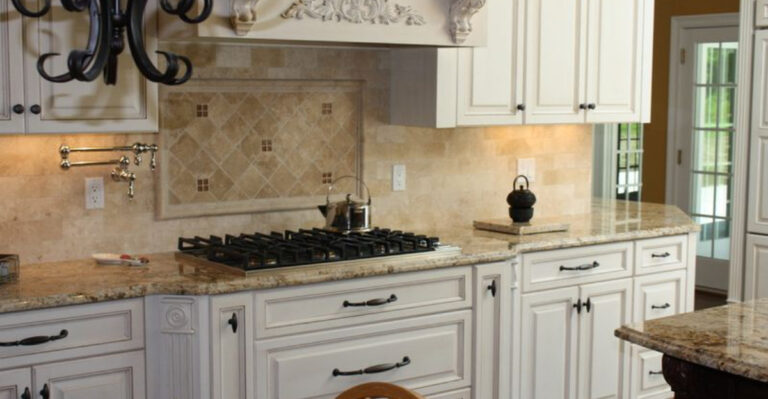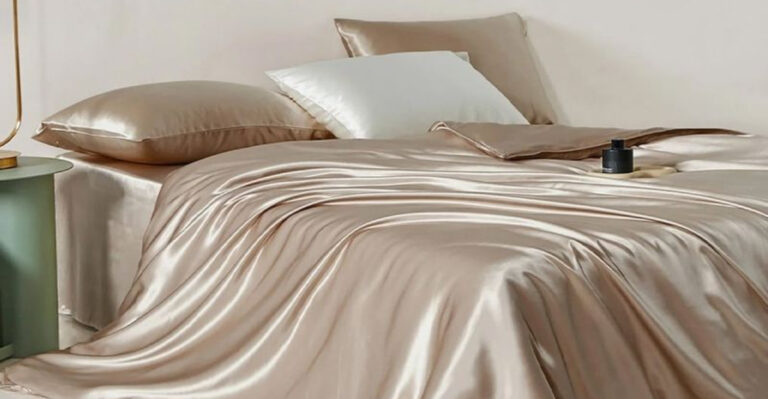Fill Your Home With Art You Actually Love With These 18 Tips And Tricks
I used to think art had to match the furniture or follow some design rule, but then I started picking pieces that just felt right. That’s when my house finally started feeling like home.
Surrounding yourself with art that speaks to you isn’t about impressing guests or staying on trend. It’s about creating a space that makes you smile every time you walk in.
Whether it’s a bold painting or a tiny thrifted sketch, it should reflect you. If you’re ready to start a collection that feels personal and lasting, these tips will help you find pieces you truly love.
1. Start With What Moves You

Forget what’s trendy or what your friends might think. The only true compass for selecting art should be your genuine emotional response. Does the piece make you smile? Does it spark a memory? Does it give you goosebumps?
Art lives with you daily, so choose pieces that trigger positive feelings every time you glance their way. Your collection becomes more meaningful when each piece tells a story that matters to you personally.
2. Mix High And Low Price Points

Building an art collection doesn’t require emptying your bank account. Combine investment pieces with affordable finds from student shows, craft fairs, or online marketplaces. Even a beautifully framed postcard can look stunning!
The joy comes from the hunt itself. Some of my most treasured pieces cost less than a dinner out, while creating the same daily happiness as works that cost ten times more.
3. Consider Your Space Before Buying

That giant canvas might look amazing in the gallery, but will it overwhelm your apartment? Take measurements of your walls and consider the light conditions in your home.
Snap photos of potential hanging spots to reference while shopping. Some art dealers even offer home trials, letting you live with a piece before committing.
Remember that art doesn’t just occupy physical space—it creates visual weight that affects how a room feels.
4. Embrace The Unexpected Medium

Art isn’t limited to paintings and prints. Textile art, ceramic wall installations, shadow boxes, or even artfully arranged collections can become striking focal points in your home.
My friend transformed her living room with a collection of handwoven baskets from her travels. Another mounted vintage wooden bread boards as kitchen art.
Unconventional materials bring texture and dimension that flat works can’t match.
5. Follow Artists On Social Media

Instagram and TikTok have revolutionized how we discover artists. Following creators gives you front-row access to their process, inspiration, and upcoming shows.
You’ll often find special releases or studio sales announced exclusively to followers. Plus, connecting with artists directly adds meaning when you eventually purchase their work.
Many emerging artists sell affordable original pieces directly through social platforms before gallery representation raises their prices.
6. Create A Gallery Wall Gradually

The most interesting gallery walls evolve over time rather than arriving pre-packaged. Start with one anchor piece you love, then build around it as you discover new treasures.
Gallery walls tell your story through visual chapters. Mine includes concert posters from significant shows, a watercolor from my honeymoon, and prints from local artists in cities I’ve called home.
This slow-growth approach ensures authentic connections to each piece.
7. Swap Seasonal Pieces

Who says your art display must remain static? Create a rotation system to refresh your space without buying new pieces. Lighter, brighter works might feel perfect for summer, while moodier pieces suit winter months.
I store off-season art in a dedicated portfolio case under my bed. The simple act of swapping pieces twice yearly makes me appreciate my collection anew.
Bonus: rotation prevents sun damage to valuable works!
8. Commission Something Personal

Nothing beats art created specifically for you. Many artists accept commissions at surprisingly reasonable rates, especially if you connect with emerging talents.
Consider commemorating meaningful locations, pets, or family moments. My sister commissioned an artist to paint the hiking trail where her husband proposed.
The artist’s interpretation adds a magical layer beyond what a photograph could capture, creating truly one-of-a-kind decor.
9. Frame Like A Pro

Professional framing transforms even inexpensive prints into statement pieces. While custom framing can be pricey, it’s worth investing for special pieces.
For budget options, scout thrift stores for quality frames you can repurpose. Many craft stores also offer periodic framing sales.
The right frame complements without competing with the artwork—sometimes a simple float mount in a clean frame lets the art truly shine.
10. Light Your Art Properly

Even masterpieces disappear in poor lighting. Consider adding picture lights or adjustable track lighting to highlight your collection. Battery-operated LED picture lights offer renter-friendly solutions without wiring.
Avoid placing valuable art in direct sunlight, which causes fading. UV-protective glass provides additional protection for precious pieces.
Thoughtful lighting doesn’t just showcase art—it creates magical evening ambiance.
11. Go Beyond The Wall

Art doesn’t need to hang! Sculptures, art books, and smaller pieces deserve display space on shelves, mantels, and tables. Create vignettes by grouping complementary objects of varying heights.
Leaning larger pieces against walls creates a casual, gallery-in-progress vibe that’s currently trending. This approach allows easy rearrangement without hammer and nails.
Even the books on your coffee table can function as accessible, changeable art.
12. Visit Local Art Schools

Student exhibitions offer incredible opportunities to discover fresh talent at affordable prices. These shows typically happen at semester’s end and feature work from tomorrow’s art stars.
Supporting student artists feels good and might yield impressive returns if they become famous. I purchased a painting from a graduate show for $200 that’s now worth ten times that amount.
Plus, you’ll have the coolest origin story when guests ask about your striking wall piece!
13. Hunt For Vintage Treasures

Estate sales, flea markets, and antique shops hide forgotten masterpieces waiting for rediscovery. Vintage botanical prints, architectural drawings, and old maps bring historical charm to contemporary spaces.
My favorite living room piece came from a box of “junk prints” at a rural estate sale. The hand-colored bird illustration cost $5 and receives more compliments than anything else I own.
Vintage hunting adds the thrill of the chase to your art collection journey.
14. Create Conversation Zones

Strategic art placement can transform how people interact in your home. Place thought-provoking pieces in areas where guests gather to spark natural conversation.
My dining room features a controversial contemporary photograph that never fails to generate dinner discussion. The guest bathroom showcases humorous prints that always get mentioned.
Consider the emotional tone you want for each room and select art that enhances that feeling.
15. Make Art A Family Affair

Involve everyone in your household in art selection. Kids develop amazing taste when given agency to choose pieces for their spaces. My son selected an abstract painting at age seven that still works beautifully in his teen room.
Create dedicated display areas for rotating children’s artwork. Professional framing of select kid creations elevates their status and preserves precious memories.
Family art experiences build shared appreciation for creativity.
16. Explore Print Exchanges

Artists often trade work with each other through organized print exchanges. Many of these groups welcome collectors who contribute to exchange costs in return for a portfolio of original prints.
Local printmaking studios frequently host such events. I joined a holiday print exchange last year and received twelve original works for the price I would have paid for one.
These exchanges introduce you to multiple artists’ styles simultaneously.
17. Document Your Collection

Create a simple catalog of your growing art collection. Include artist information, purchase dates, and any meaningful stories behind each acquisition.
This documentation proves invaluable for insurance purposes and eventual estate planning. Apps like Artsy and ArtFacts help organize collection details with professional gallery-style features.
Your catalog becomes its own kind of memory book, tracking your evolving taste and significant life moments.
18. Trust Your Evolution

Your taste will change—embrace it! The pastoral landscapes that spoke to you in your twenties might give way to bold abstracts in your thirties. This evolution reflects your personal growth.
Don’t feel obligated to keep pieces that no longer resonate. Sell or gift art that doesn’t suit your current sensibility to make room for new discoveries.
A living, breathing collection should change as you do.







